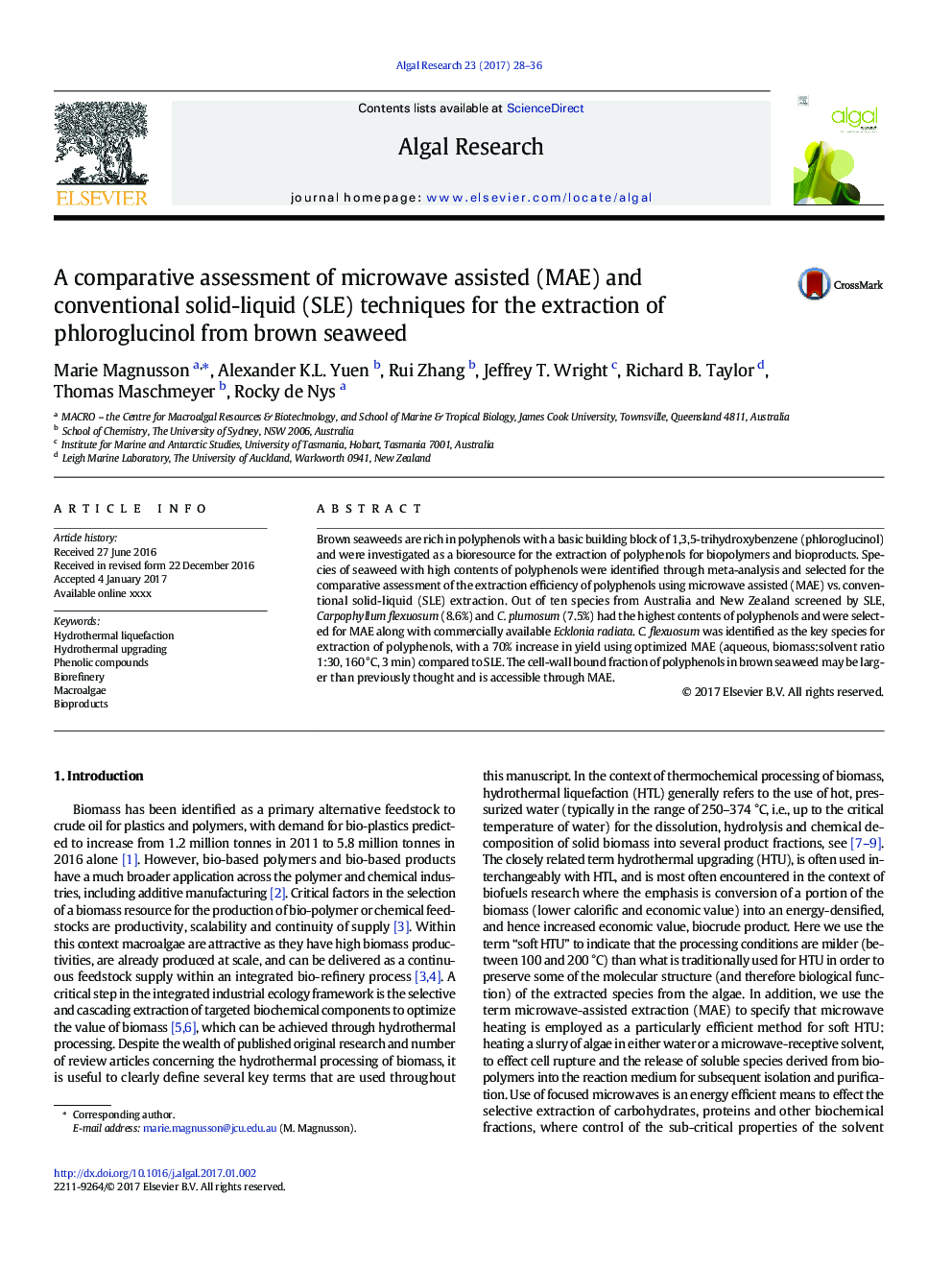| Article ID | Journal | Published Year | Pages | File Type |
|---|---|---|---|---|
| 5478340 | Algal Research | 2017 | 9 Pages |
Abstract
Brown seaweeds are rich in polyphenols with a basic building block of 1,3,5-trihydroxybenzene (phloroglucinol) and were investigated as a bioresource for the extraction of polyphenols for biopolymers and bioproducts. Species of seaweed with high contents of polyphenols were identified through meta-analysis and selected for the comparative assessment of the extraction efficiency of polyphenols using microwave assisted (MAE) vs. conventional solid-liquid (SLE) extraction. Out of ten species from Australia and New Zealand screened by SLE, Carpophyllum flexuosum (8.6%) and C. plumosum (7.5%) had the highest contents of polyphenols and were selected for MAE along with commercially available Ecklonia radiata. C. flexuosum was identified as the key species for extraction of polyphenols, with a 70% increase in yield using optimized MAE (aqueous, biomass:solvent ratio 1:30, 160 °C, 3 min) compared to SLE. The cell-wall bound fraction of polyphenols in brown seaweed may be larger than previously thought and is accessible through MAE.
Keywords
Related Topics
Physical Sciences and Engineering
Energy
Renewable Energy, Sustainability and the Environment
Authors
Marie Magnusson, Alexander K.L. Yuen, Rui Zhang, Jeffrey T. Wright, Richard B. Taylor, Thomas Maschmeyer, Rocky de Nys,
